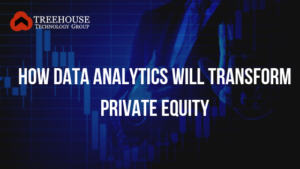“If you torture the data long enough, it will confess.” — Ronald Coase (Economist)
When it comes to business analytics tools, the software industry has been in overdrive mode.
Dozens of new business analytics tools have been developed in the last couple of years.
According to Gartner1[ASK1], by 2022, more than half of the business systems will use continuous intelligence – that is, real-time analytics integrated within a business operation to prescribe actions in response to events, and thus improve business decisions.
We can already see that most of the popular business analytics tools provide powerful data analytics features to business processes in an automated manner. This means that organizations do not need to rely on hard-to-find and expensive data scientists in order to use advanced business analytics tools.
In every modern organization, large amounts of data are being continuously spewed out by a variety of business systems used in modern organizations – such as CRM, ERP, SCM, in addition to niche systems used for marketing and finance. But all this data needs to be brought into a common platform in a compatible and standardized manner to enable business analysts and managers to use this data effectively to improve decision making.
The new cutting-edge business analytics tools available today are revolutionizing how big data is handled and being made available in an easy-to-use, intuitive interface. These tools are putting the power of advanced business analytics directly into the hands of managers and business analysts, without relying on data scientists to build new models of data.
With these advanced tools, the industry is now moving more towards predictive analytics as a step up from descriptive analytics.
Let’s take a quick look at 3 popularly used business analytics tools:
1. Tableau
Tableau is an advanced business analytics tool that can be used for data discovery, as well as for reporting and data visualization in medium to large enterprises.
With the help of a large number of data connectors, Tableau can bring together data from multiple sources, such as disparate databases, offline spreadsheets, and even from cloud-based apps. It allows users to create and share unique data sets, and work collaboratively with others in the organization.
Visual reporting and interactive dashboards help yield insights from the data as well as use data storytelling techniques. Tableau has been customized for various industry requirements, e.g., healthcare, technology, real estate, etc. It has, however, been felt that Tableau may be more suitable for use by data analysts rather than non-technical business managers. Tableau was acquired by Salesforce in 2019.
2. Sisense
Sisense is a tool known to be ideal for the not-so-tech-savvy user. It allows even non-technical business users to manipulate complex data sets through an intuitive interface and create data visualizations without the intervention of specialist resources, data analysts or data scientists.
Sisense is also known to process data faster than other comparable tools. Sisense’s Elastic Data Engine gives it the flexibility to prepare, query and manage data. With dashboarding functionalities, the ability to blend large amounts of data, and slice and dice data, Sisense is ideal for small and medium-sized organizations. It can be deployed on cloud as well as on-prem and in a hybrid model.
3. Power BI
This web-based business analytics and data visualization tool from Microsoft helps users to easily analyze, transform, and visualize data. This platform is ideal for users who need to pull data from other Microsoft products. While it has full BI capabilities and helps bring together complex data sets from disparate sources for analysis, its real power lies in its data visualization capabilities. With its intuitive interface, which is typical of Microsoft products, and its data connecting functionalities, Power BI is a good choice for both technical users, as well as business users.
As we can see from the examples above, these tools have brought data discovery into the purview of decision-makers rather than keeping it restricted to a few data scientists. Advanced business data analytics tools are making insights from data available to line-of-business managers and business analysts who can effectively bring relevant data in one place, resolve issues based on data, and forecast future outcomes based on past data.
Some key features that most of the popular analytics tools include are:
– An intuitive interface, which allows analytics to be performed without any coding or programming involved
– Ability to bring together data from disparate sources and blend or mash-up data from different data sets
– Uncover insights automatically that can be readily used by business users without any data mining
– Collaborative tools that enable users to share dashboards, reports, and insights with team members and stakeholders.



